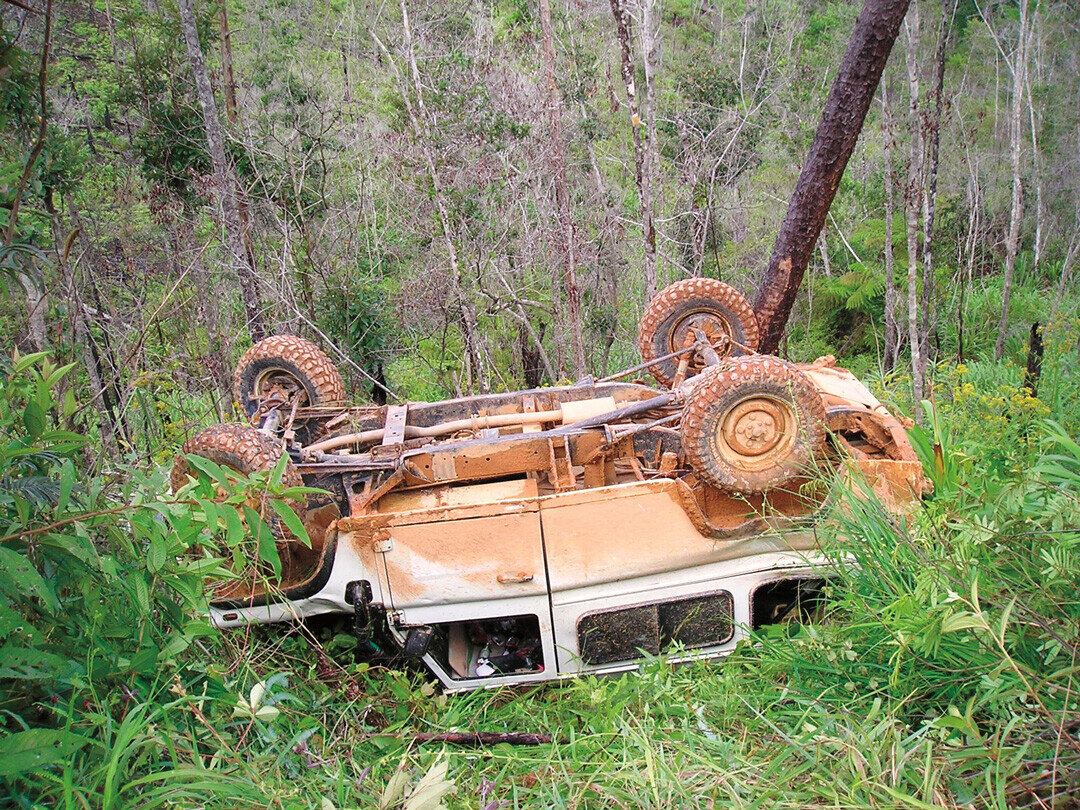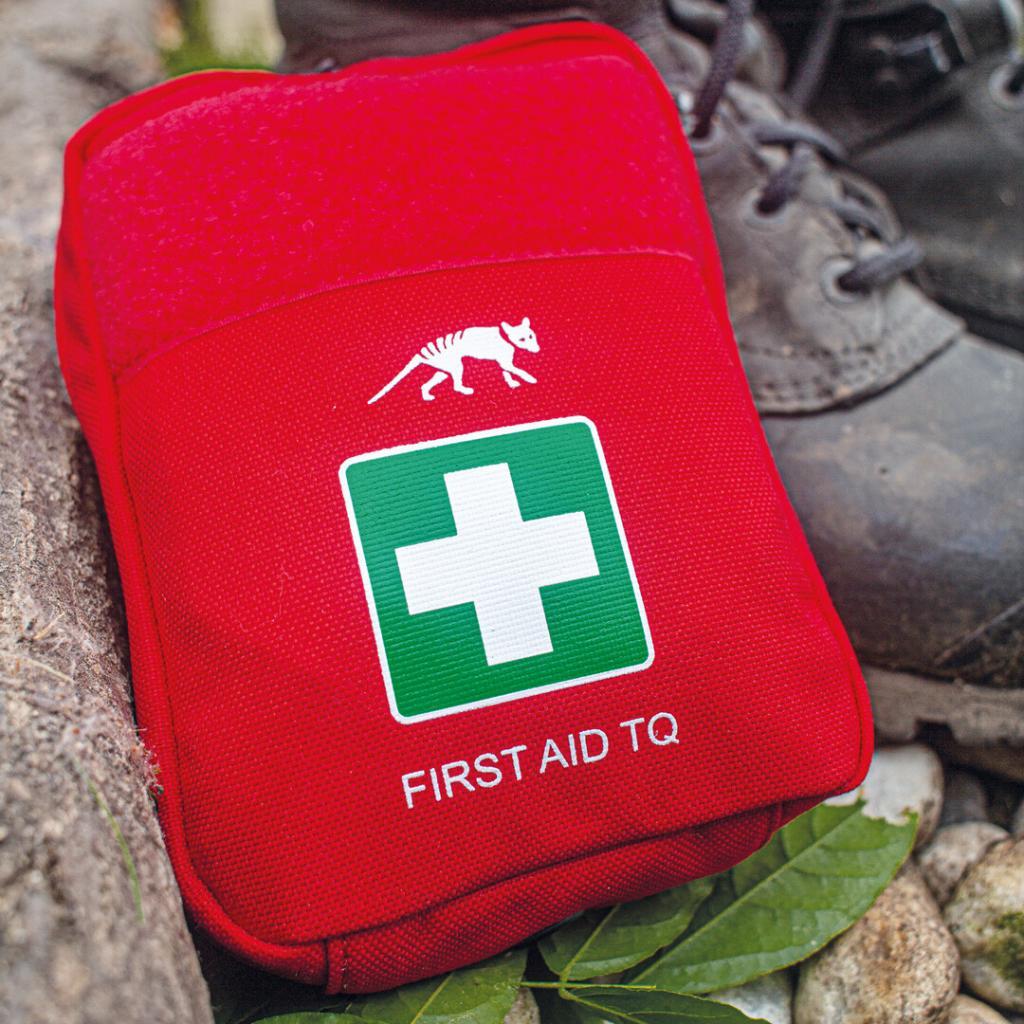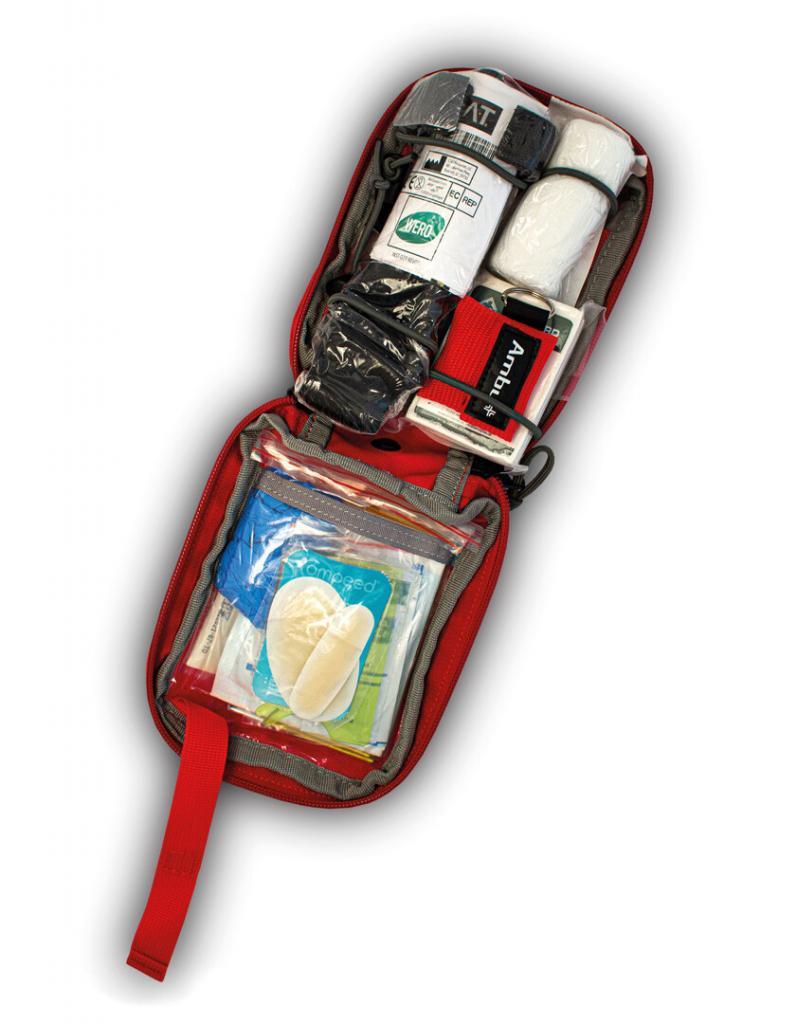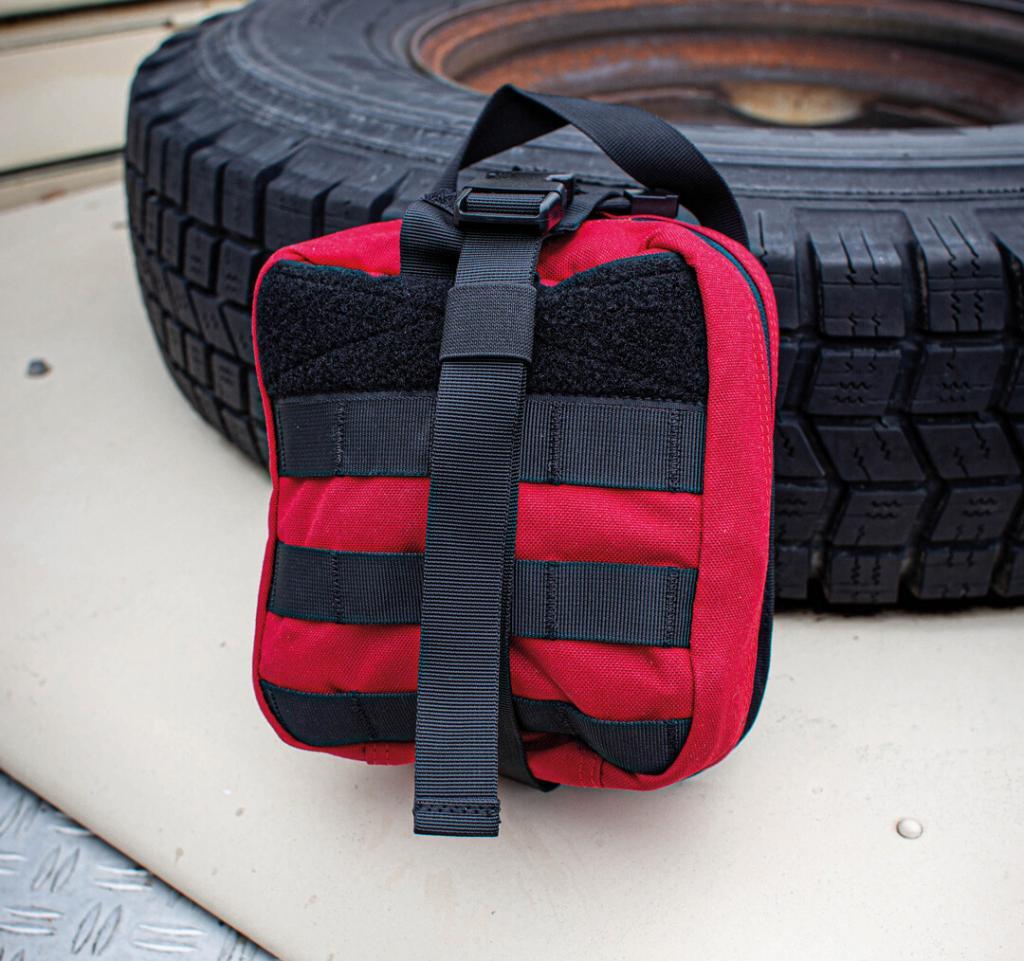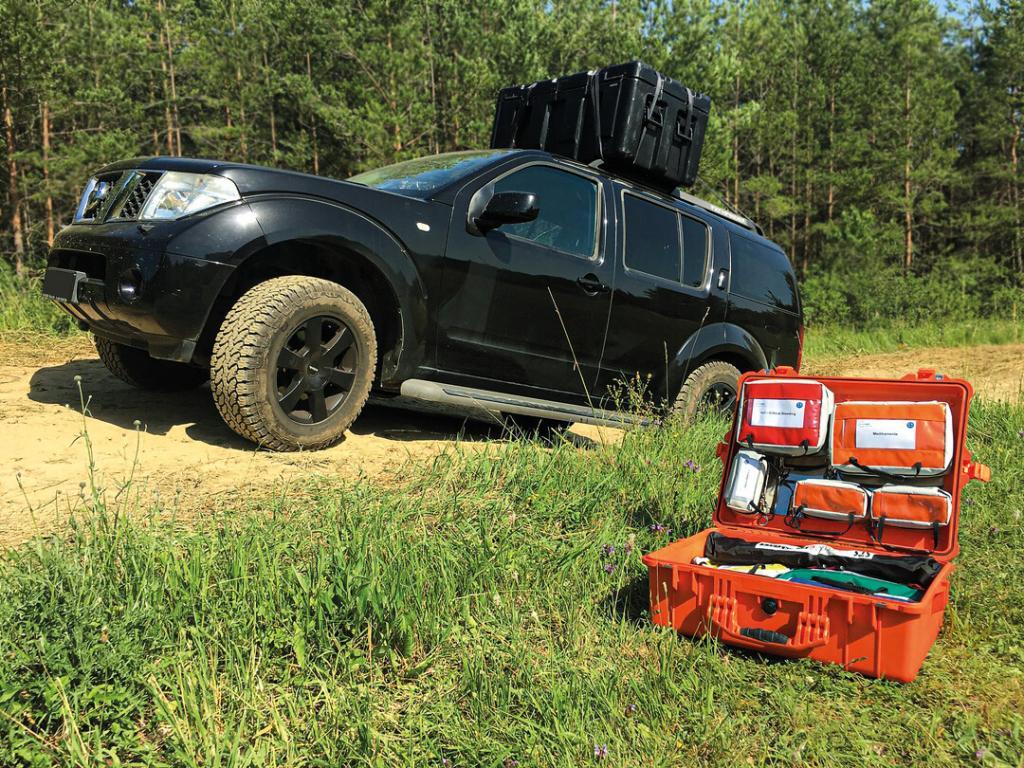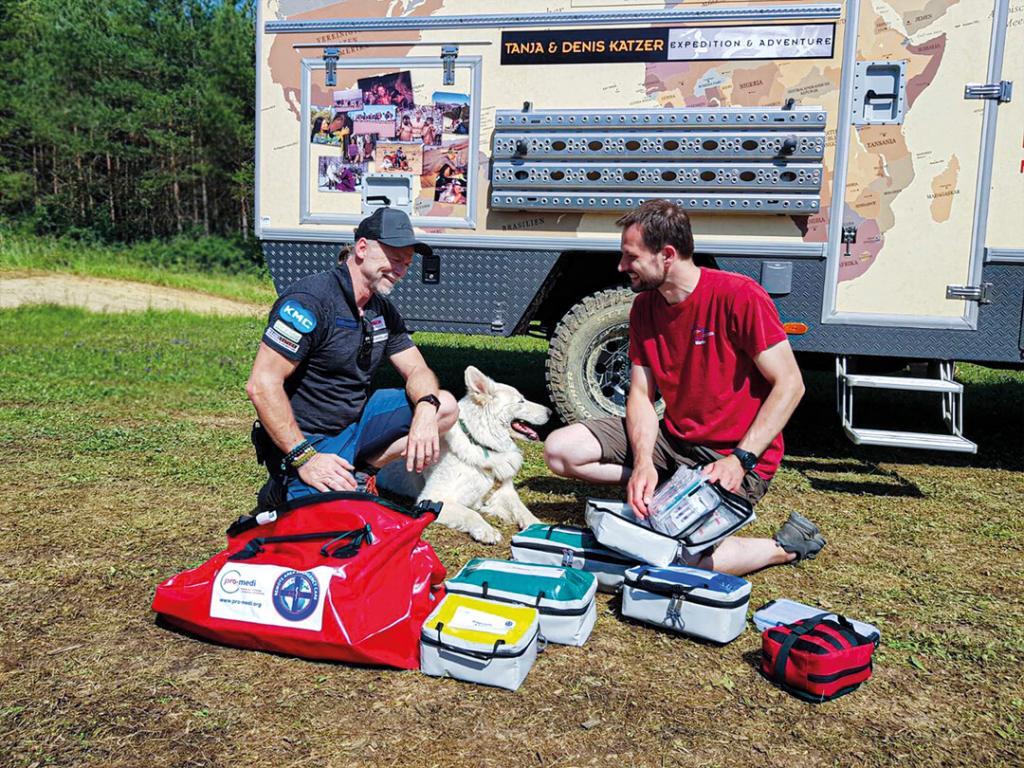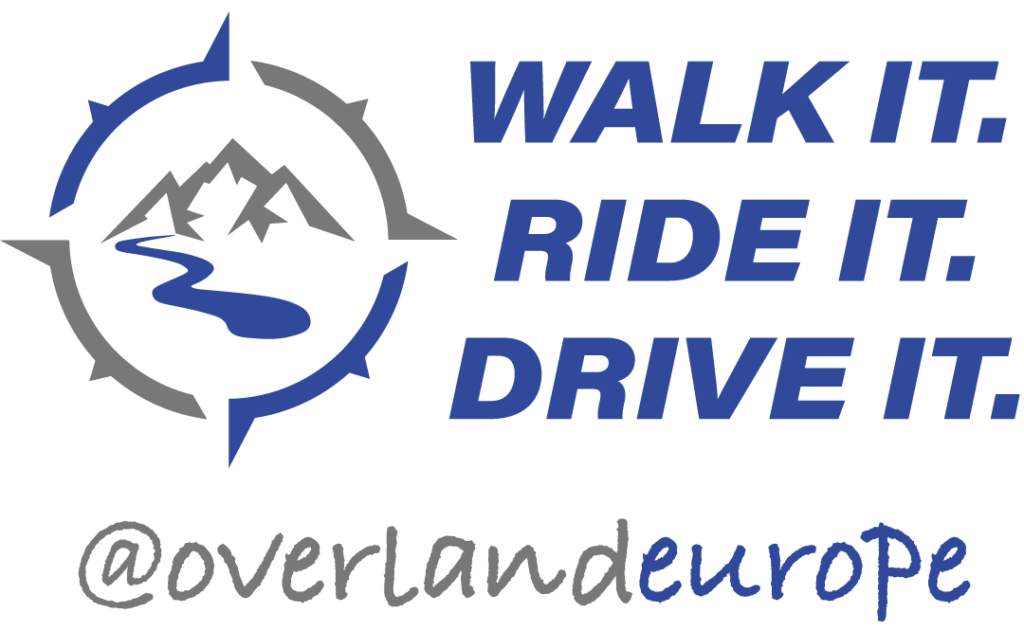Accept it: Things. Go. Wrong. And when they do, they happen in the worst place and at the most inappropriate time.
On the upside, we are inclined to invest time, money and effort in preparing our vehicles to cope with the most challenging situations and, as a precautionary measure, stock the on-board inventory accordingly. After all, none of us want to be caught without the necessary tools, spare parts, and salvage equipment to rescue the moment. There are countless online threads discussing and promoting winches, jacks, ropes, field repair kits, and best practices. Camp fire stories are often based upon such adventures.
But, how many of us really know what to do when an incident involves personal injury? What does it entail to be adequately prepared?
I often ask fellow travellers how they prepare for worst case scenarios. “Avoiding risky situations” is a popular answer. In reality, things can go from being great to disastrous in the blink of an eye. No matter how conscientious we are, accidents happen and they don’t even have to be our fault.
Unfortunately, the first aid kit we are legally obliged to carry in our vehicles is not going to be very helpful for anything more than the most basic superficial injury. If you have ever taken a look at the contents, you won’t find much more than a few plasters, the most rudimentary bandages and compresses, some feeble scissors, latex gloves, a thermal sheet, and a other items which may be enough to help a mild household wound.
Overlanding? The mere word conjures up remote locations and situations that are anything but normal.
In our modern society, it is fair to expect a first responder to arrive at the scene within approximately five minutes in an urban environment. A little longer in rural areas. Travel in the wilderness and you maybe looking at several hours or even days.
KNOWLEDGE
We spoke to our medical advisor, Martin Eickhoff, founder of pro-medi GmbH and instructor to rescue teams, hospital staff, emergency doctors, police, and the special forces.
First of all, it is important to consider the nature of travel and the intended destinations. If you are backpacking, cycling or motorcycling, size and weight play a significant role compared to when you are driving a 4×4 or a truck. Depending on where you choose to travel, the contents of the first aid kit may need adjusting and you may even want to consider taking along your own syringes and needles.
However, even if you have exactly what is necessary to treat an injury, if you don’t know what to do, you still aren’t going to be very helpful. The basic training during a driving license course is certainly better than nothing, but by no means adequate enough for an emergency beyond an urban infrastructure.
If you are serious about overlanding, then you should be just as serious about first aid. A weekend course will give you the knowledge and confidence to assess a situation, understand the content and use of your first aid kit, and respond in a manner which can potentially save a life (or at least stabilise an injured person until professional help can take over).
Upon the assumption that a basic training course can be attended, we have prepared three medical Individual First Aid Kits (IFAK) for different types of traveller. Having one of these kits at hand even without the training may still make all the difference if someone else in your party—or a bystander—has the necessary skill set.
EQUIPMENT
For the purpose of this article, we have broken the sets into four categories: the popular LIGHT, BASIC, and ADVANCED IFAK (Individual First Aid Kit) sets, which are available off the shelf, and the custom-made EXPEDITION kit.
Each set is described separately, but it should be noted that they do not include any medications, such as pain killers. If necessary, they need to be purchased separately from a chemist after a prior consultation with your doctor.
OUTDOOR IFAK LIGHT | HIKING, CYCLING, MOTORCYCLING
Measuring 18 x 12 x 6.5 cm and weighing 385 g, this compact kit fits easily into a daypack, backpack, pannier, or even on your belt. There are certainly a few comparably sized kits available on the market, but upon closer inspection, their contents pale before those of the OUTDOOR IFAK LIGHT—a major step in the right direction considering the injuries which can be sustained when things go rubber side up on mountain bikes and motorcycles.
The first really useful feature is the pull tag which facilitates single-handed opening of the bright red pouch. Inside, the contents are organised in mesh sleeves, and each item is individually packed for protection against dust and moisture.
Despite its compact dimensions, the contents are extensive and cover everything from blisters and small burns to a torn limb and critical bleeding.
CONTENTS
- 1 IFAK pouch, small (red)
- 1 CAT Tourniquet Gen. 7
- 1 gauze
- 1 Ambu LifeKey
- 1 bandage
- 4 compresses (2 pieces) 5 x 5 cm
- 1 WaterJel (4 g)
- 4 Hansaplast sterile plasters
- 4 3M sterile plasters 5 x 7 cm
- 1 3M Steri-Strips (3 pieces)
- 2 blister plasters
- 1 tick card
- 1 rescue blanket
- 4 disposables gloves (pair)
€99 | PRO-MEDI.ORG
OUTDOOR IFAK BASIC | 4×4 OVERLANDING
Designed for overlanding in vehicles where space can be limited, the BASIC’s pouch measures 20 x 18 x 12 cm and weighs 1,480 g. A big plus is the velcro mounting pad which can be strapped to the back of a headrest or some other easily accessible point. When needed, the pouch is simply pulled off the pad and is ready for action.
The OUTDOOR IFAK BASIC has been developed to take care of situations not necessarily resulting from a vehicle accident. Overlanding is a hands-on lifestyle where salvaging a vehicle, chopping wood for an open fire, mechanical repairs, hunting, and many other outdoor activities can result in minor and serious injuries.
Something often missed in other first aid kits are light sticks which will provide several hours of illumination—useful for working in the dark in the wilderness and acting as a beacon for search parties.
The pouch is by no means bursting at the seams and still has room for personal medication.
The contents benefit from a Remote Area Emergency Care (RAEC) responder course and cover critical bleeding, airways, breathing, small burns, a chest puncture, and most minor injuries.
CONTENTS
- 1 IFAK pouch, large (red)
- 2 CAT Tourniquet Gen. 7
- 1 QuickClot gauze
- 2 gauzes
- 2 emergency bandages M
- 1 nasopharyngeal airway & lubrication
- 1 HALO chest seal (2 pieces)
- 1 Ambu LifeKey
- 1 scissors incl. seatbelt knife
- 4 compresses (2 pieces) 10 x 10 cm
- 3 WaterJel (4 g)
- 4 3M sterile plasters 5 x 7 cm
- 2 3M Steri-Strips (3 pieces)
- 2 blister plasters
- 1 tick card
- 1 splinter tweezers
- 1 rescue blanket
- 2 stick lights
- 4 disposables gloves (pair)
€359 | PRO-MEDI.ORG
OUTDOOR IFAK ADVANCED | 4×4 OVERLANDING
Outwardly no different to the BASIC version, the ADVANCED has identical contents except for the addition of two relief puncture needles which can be used in the case of a life-threatening tension pneumothorax (the build-up of air inside the chest cavity which will ultimately cause cardiovascular failure).
€399 | PRO-MEDI.ORG
OUTDOOR IFAK EXPEDITION | REMOTE AREA ADVANCED MEDICINE
The Remote Area Advanced Medicine EXPEDITION kits are designed to address a larger spectrum of injuries and illnesses which may be encountered during long-term travel in remote regions. After a full consultation reflecting the intended destinations and number of team members (including pets), pro-medi will configure a dedicated kit.
€ POA | PRO-MEDI.ORG
STERILE SET | REMOTE AREA
If you are embarking on a journey through countries where local medical care centres may not be adequately stocked with sterile supplies, this selection of sterile cannulas, syringes, and intravenous catheters is an additional precaution against unnecessary patient-to-patient infection.
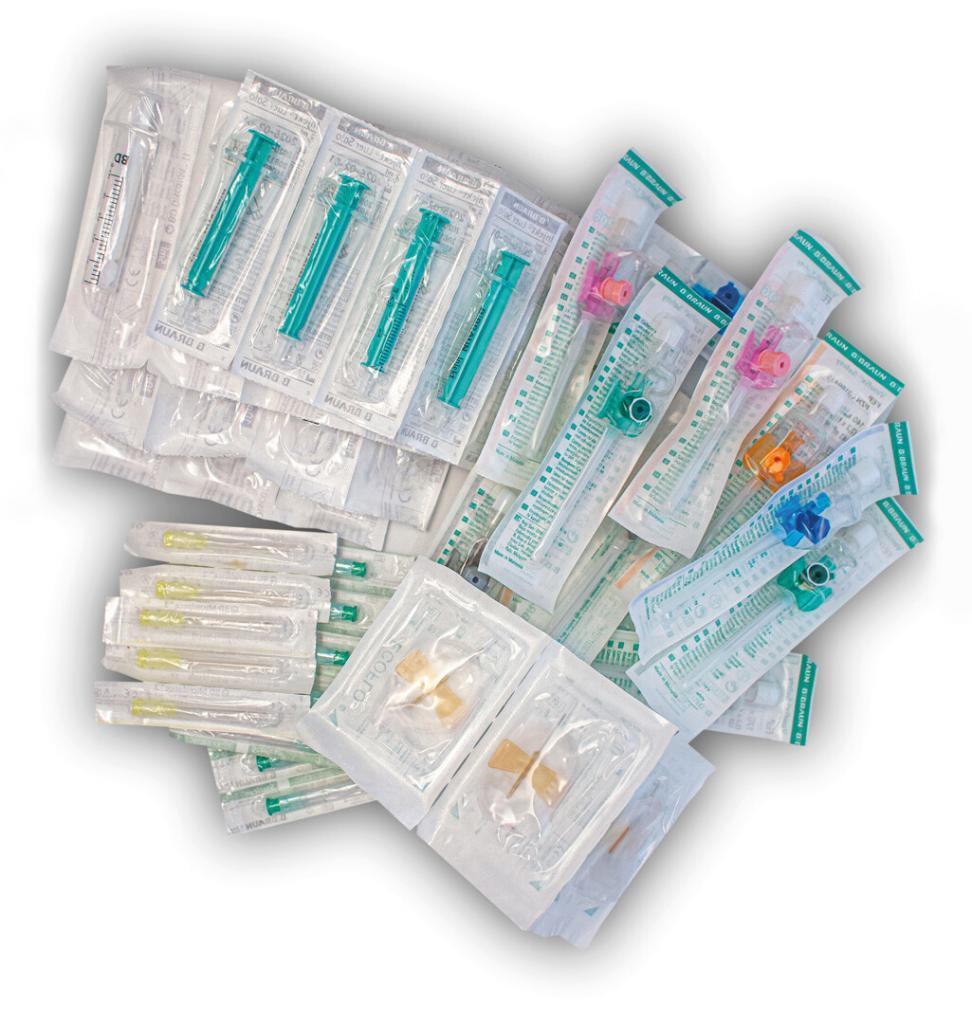
CONTENTS
- 10 sterile cannulas, s.c.
- 10 sterile cannulas, i.m. / i.v.
- 10 syringes (2 ml)
- 10 syringes (5 ml)
- 10 syringes (10 ml)
- 4 syringes (20 ml)
- 2 intravenous catheters, blue (22 g)
- 2 intravenous catheters, pink (20 g)
- 2 intravenous catheters, green (18 g)
- 2 intravenous catheters, white (17 g)
- 2 intravenous catheters, grey (16 g)
- 2 intravenous catheters, orange (14 g)
- 4 butterfly cannulas, s.c. / i.m. / i.v.
€49 | PRO-MEDI.ORG
Feature image: Accidents can happen in a moment, as shown by Will Mather in Belize, who took this image after a fellow traveler rolled this Defender off a muddy track.
This article first appeared in the 2020 Summer edition of Overland Journal.

